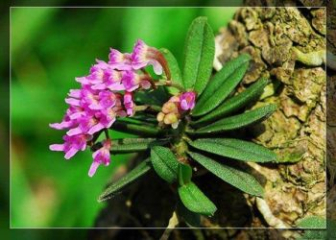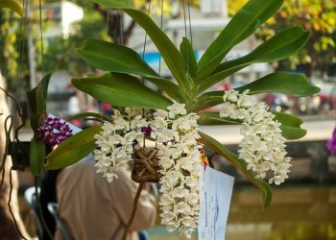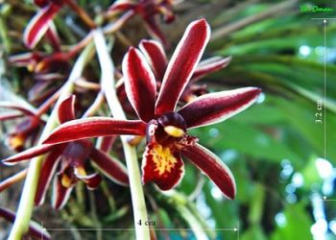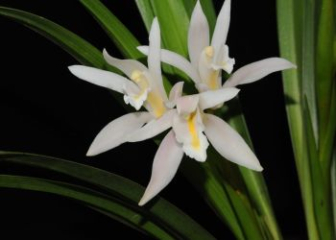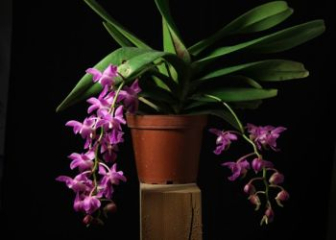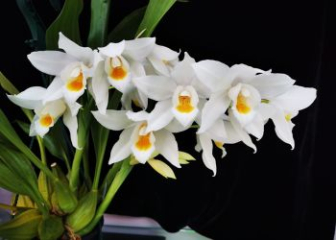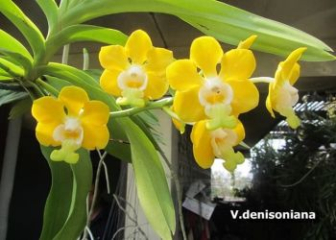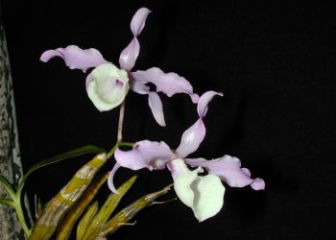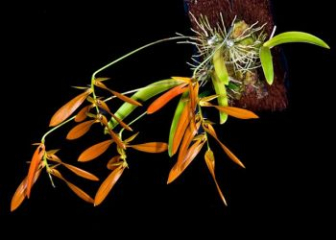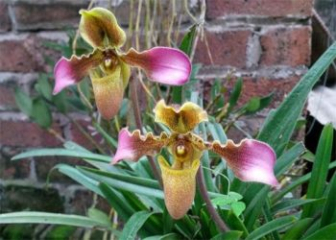Brocade orchid (Golden orchid) - A precious medicinal herb in Oriental medicine
Blog | by
The brocade orchid (golden orchid) is a rare medicinal orchid with shiny golden veins and spider web or feather patterns. It is a moisture-loving, shade-loving species.
The brocade orchid , also known as the golden orchid (scientific name: Anoectochilus roxburghii), is one of the rare medicinal orchid species in Oriental medicine. It stands out with its unique appearance thanks to its shimmering leaf veins like gold threads, and has many uses in both traditional and modern medicine, and is considered the "ginseng of the orchid family".
Thanks to its important uses and great economic potential, brocade orchids are increasingly attracting more and more attention. In today's article, let's learn more about the origin, characteristics, and techniques for growing, caring for, and harvesting this orchid species properly.
Origin of orchid
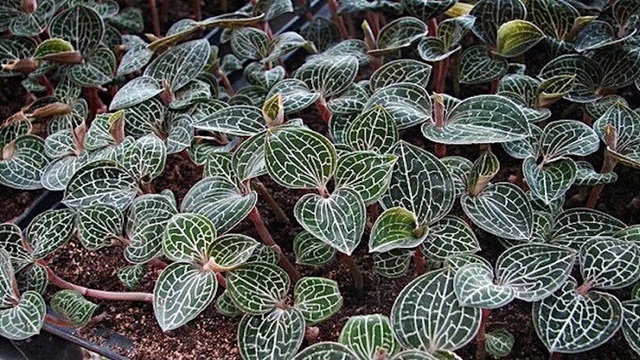
Orchid is the king of herbs.
Brocade orchids, also known as golden orchids, diamond orchids, and stone pine orchids, have the scientific name Anoectochilus roxburghii, belonging to the genus Anoectochilus, family Orchidaceae (orchids).
The first recorded orchids were in the 18th - 19th centuries in the East Indies (now India and Myanmar). They are also distributed in several Asian countries such as China, Bhutan, Thailand, Laos and Vietnam.
In Vietnam, orchids appear in many humid mountainous areas, with an average altitude of 300 - 1500m, typically in the following areas:
- Hoang Lien Son mountain range in Lao Cai
- Cuc Phuong National Park, Pu Mat, Phong Nha - Ke Bang.
- Truong Son range, Gia Lai, Kon Tum, Lam Dong, Phu Yen,...
Nowadays, because orchids can be used as ornamental plants and have high medicinal value, they are overexploited and have been listed in the Vietnam Red Book as "threatened - needing protection".
Signs of orchid identification
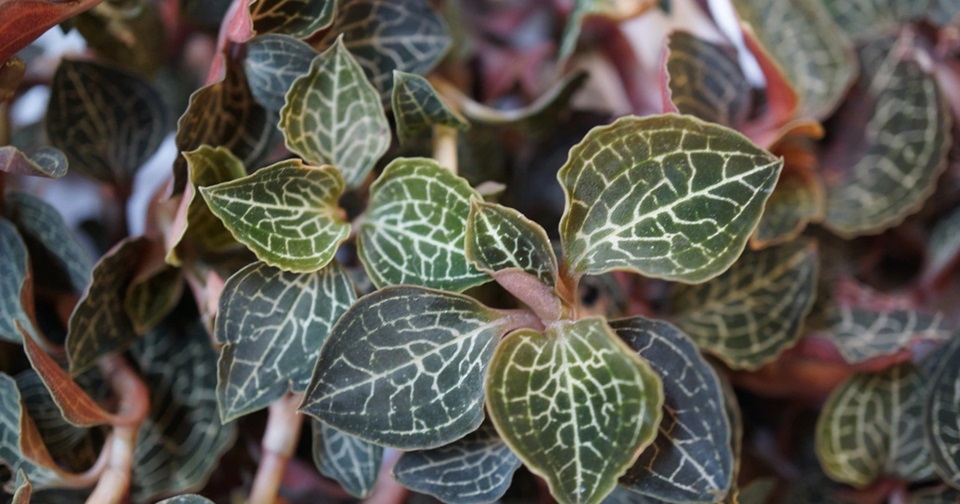
The orchid leaves have impressive and unique patterns.
Let's learn in detail about the morphology of brocade orchids (golden orchids) to see if they are different from other orchid species.
Close :
- Herbaceous, creeping on the ground and can grow from 10 - 25 cm
- The body is purple-brown, red-brown or dark green, covered with a layer of fine hairs.
- The stem has many eyes and nodes, easily produces new shoots and can be propagated by dividing the stem.
Leaves :
- Growing symmetrically on both sides of the body, oval shaped, slightly blunt tip, tapered base
- Leaf size is 4 - 9 cm long, 2 - 5 cm wide
- The upper surface of the leaves is dark green, velvety, with many copper-yellow veins, metallic sheen that looks like golden embroidery threads.
- Leaf veins are reticulate or distinctly pinnate.
- The underside of the leaves is purple-red or red-green.
- Leaves are thin, soft but tough and slightly elastic.
Roots :
- Taproot, opaque white
- Has good moisture absorption capacity
Brocade orchid (golden orchid) :
- Flowers grow on long stalks from the top of the stem.
- Each flower has 5 - 15 tiny flowers.
- Flowers are 1 - 1.5 cm in diameter, white or mixed with blue, purple, slightly yellow, long lip, with soft hairs.
- The flowers have a faint scent.
Result :
-
Has small, elongated capsule-shaped fruit 1 - 2 cm long
The role of orchids in traditional medicine
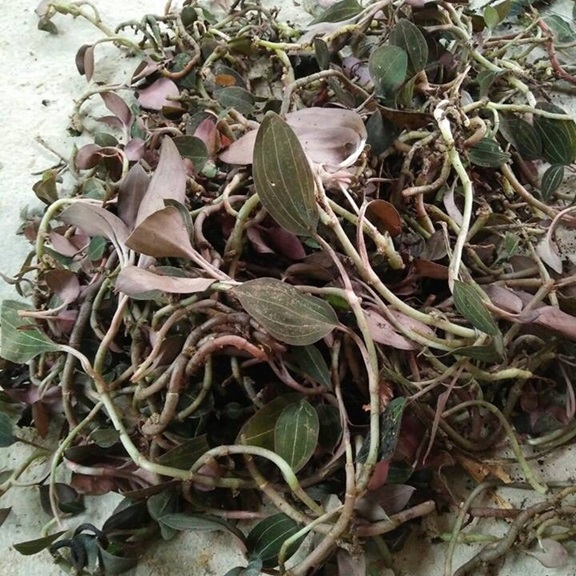
Orchid is a precious medicine in Oriental medicine.
Not simply an ornamental orchid, the brocade orchid (golden orchid) is also known as one of the rare medicinal herbs and plays an important role in traditional medicine.
Name and properties in Oriental medicine
In traditional oriental medicine, brocade orchid is also known as diamond lotus, wood mountain stone pine. The medicinal name is Golden thread lotus (Jin Xian Lian – 金线莲).
Orchid has the following properties :
- Character : Cool
- Taste : Sweet and slightly bitter
- Meridians : Liver, lung, stomach
- Main effects : Cooling, detoxifying, kidney tonic, yin nourishment
Pharmacological uses of orchid
Orchids have important uses in both traditional medicine (Oriental medicine) and modern medicine (Eastern - Western medicine research). Specifically as follows.
According to Oriental medicine :
- Cooling, detoxifying: treating internal heat, jaundice, weak liver
- Kidney tonic, sperm retention: helps increase vitality, improve physiology in men
- Cool liver, bright eyes: Treatment for bright eyes, red eyes due to hot liver
- Anti-inflammatory, blood circulation: Used to treat hepatitis, nephritis and bronchitis
- Sedative: Helps improve sleep, anxiety disorders, nervous breakdown
According to modern medicine :
- Support diabetes treatment, help lower blood sugar, lower blood fat
- Antioxidant, antibacterial, anti-inflammatory
- Protects the liver, reduces liver enzymes, supports hepatitis B, fatty liver
- Boost your immune system
- Inhibit cancer cells, prevent cancer
- Many studies also show that orchid can help with urination and support gout treatment.
Techniques for planting and caring for orchids bring high economic efficiency
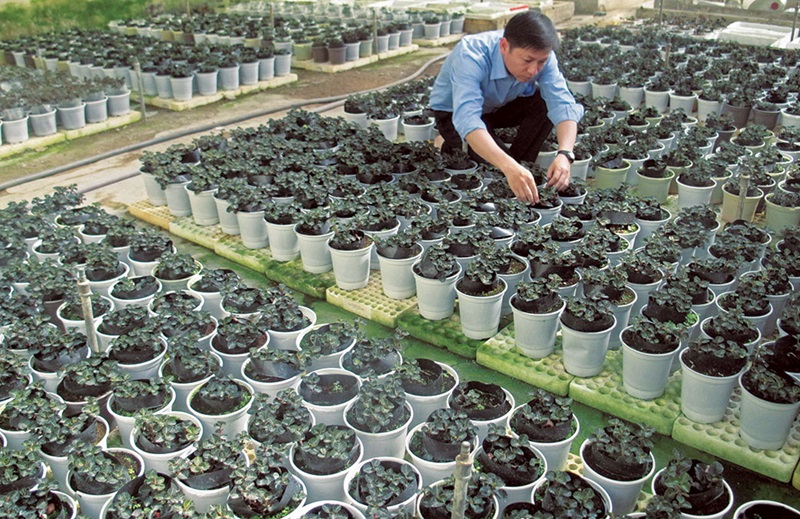
Orchid is successfully grown in Lam Dong.
Damask orchids are not suitable for mass planting outdoors for many other ornamental orchids, but you need to have a clear scale and rich experience because they are quite difficult to grow and sensitive to the environment. You can refer to the effective techniques for planting and caring for damask orchids shared below.
Prepare the ideal living environment
Orchids are only suitable for growing in greenhouses, shade houses, avoiding strong winds and stagnant water, specifically as follows:
- Light : 30 - 50%, avoid direct sunlight
- Temperature : 18 - 28 degrees C
- High humidity : 75 - 90%
- Soil pH : 5.5 - 6.5
- Environment : Ventilated, sheltered from rain and sun
Prepare seeds & growing medium
To help orchids grow well in artificial conditions, you need to pay attention to the selection of varieties and growing medium. Please note the following:
Choose orchid varieties (golden orchids):
-
Select tissue culture varieties or separate bushes from mother plants
-
Prioritize choosing seedlings 4 - 6 cm high, with 4 - 6 leaves, free of pests and diseases, healthy
Select substrate:
-
Mixing substrate: 40% dry sphagnum moss + 20% small pine bark + 20% coconut fiber + 10% pumice, or coconut fiber + rotten forest humus + coconut shell in a ratio of 3:3:4…
-
Note that the growing medium must be cleaned before planting by soaking in lime water for 5-6 hours or using Trichoderma fungicide to remove fungus.
Orchid growing techniques
Here are the detailed steps to properly grow brocade orchids (golden orchids), let's learn more.
Step 1: Seed processing :
- Wash the orchid roots with clean water, cut off damaged and diseased roots.
- Soak the roots in Atonik or B1 solution for 15 minutes to stimulate root growth.
Step 2: Plant the tree
- Spread a layer of crushed charcoal on the bottom of the pot.
- Place the plant in the middle of the pot so that the roots are in contact with the growing medium.
- Cover with another layer of substrate to help the plant stand firmly, do not fill too deep.
Step 3: Care for the tree after planting
- Use a spray bottle to water the first week, do not water the base too much because it can easily cause root rot.
- Place the plant in a cool place with 70 - 80% shade, avoid harsh sunlight.
- Fertilize with NPK 30-10-10 or B1, diluted Atonik every 2 weeks.
Harvesting and preserving orchids properly
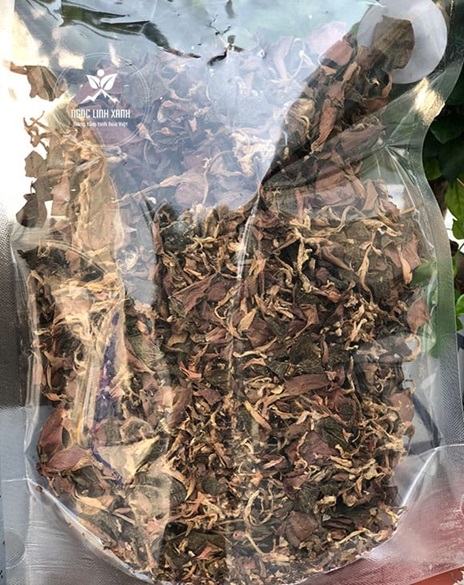
Dried orchids are stored in zip bags.
After successfully growing the orchid, you should harvest and preserve them according to the following instructions to ensure that the value of this orchid species is kept intact.
How to harvest orchids
To ensure that the medicinal value of the orchid is kept at its highest without damaging the mother plant, you must know how to harvest this orchid properly. Specifically as follows:
Ideal harvest time :
- After 6 - 9 months from the date of planting seedlings
- Healthy plant, with 6 - 8 leaves or more
- Should be harvested around September - December
Harvesting orchids properly :
- The parts that should be harvested are the leaves and stems because they contain many valuable ingredients, and the roots should be left to continue growing new shoots.
- Use scissors to cut the stem about 2 cm from the base, do not pull out the whole root.
- Only harvest 1 - 2 stems/time, do not harvest the entire bush so that the plant can continue to grow.
- After cutting, place the plant gently in a clean basket to avoid crushing it.
Care for mother orchids after harvest :
- Apply organic fertilizer or diluted NPK to help the plant recover.
- Spray Atonik, B1 to stimulate new shoots
- Gently loosen the growing medium to aerate the roots.
Preserving orchids after harvest
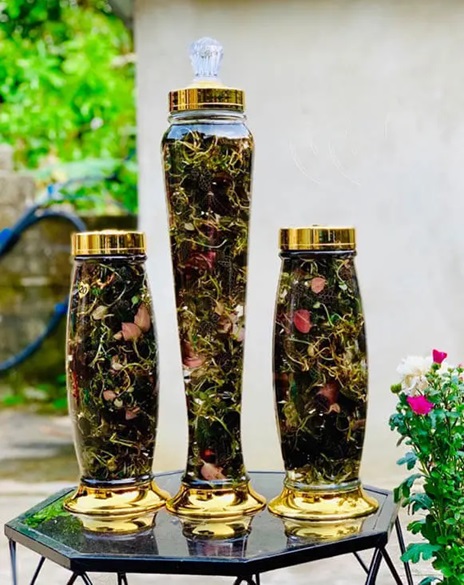
Wine jars made from orchids.
After harvest, brocade orchids can be used fresh or dried, depending on each person's purpose. However, no matter how you use them, you need to preserve the brocade orchids according to the instructions below:
- Using fresh orchids: Wash with diluted salt water, drain thoroughly before using.
- Using dried orchids: Cold drying at 30 - 40 degrees Celsius to completely dry the orchid helps preserve it for a long time, ensuring medicinal properties.
- Other processing: You can soak in wine, make tea or make medicinal herbs from the orchid.
- Packaging: Should use zip bag, vacuum, keep in cool place.
Orchid price list
Currently, orchids are sold in many different forms such as seedlings or dried medicinal herbs. Therefore, they will have many different prices. To understand better, please refer to the following price list.
|
Type of orchid (golden orchid) |
Selling price |
Note |
|
Tissue culture orchid |
30,000 - 60,000 VND/tree |
Sold in bags or nursery trays, stable |
|
Dust-free orchid |
50,000 - 120,000 VND/tree |
The plant has taken root and is 5 - 8 cm tall. |
|
Grade 1 dried medicinal orchid |
2,000,000 - 3,500,000 VND/kg |
Pre-processed, freeze-dried, used as medicine |
|
Dried medicinal orchid grade 2 |
1,200,000 - 2,000,000 VND/kg |
Popular product, used for soaking in wine |
Questions and answers about orchids (golden orchids)
What is the effect of orchid wine?
Lan kim tuyen wine has many uses such as nourishing the body, enhancing physical strength, anti-oxidation, relieving stress, improving sleep quality. However, you should consult your doctor before using and do not overuse it.
Is the exploitation of natural orchids banned?
Yes, in 2007, the orchid was included in the Vietnam Red Book and was banned from exploitation for commercial purposes.
Beautiful orchid pictures
We invite you to admire some of the most beautiful and realistic images of orchids that we have collected below to see the strange beauty that this medicinal orchid brings.
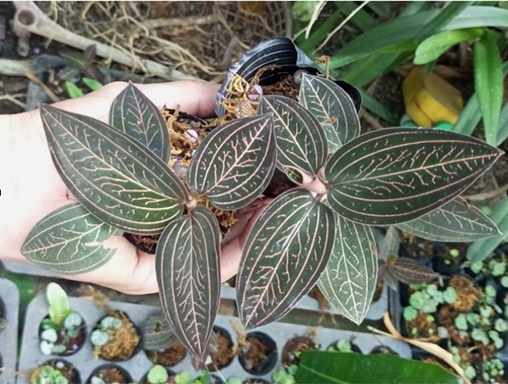
The orchid leaves have eye-catching feather patterns.
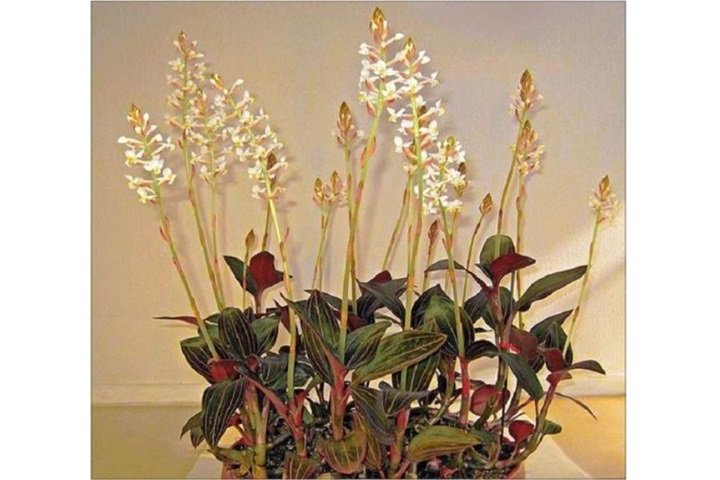
A pot of orchids is blooming beautifully.
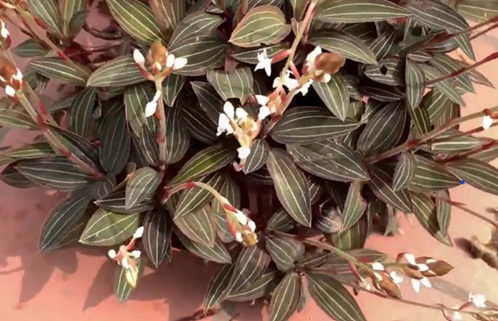
Tiny white flowers stand out against the background of orchid leaves.
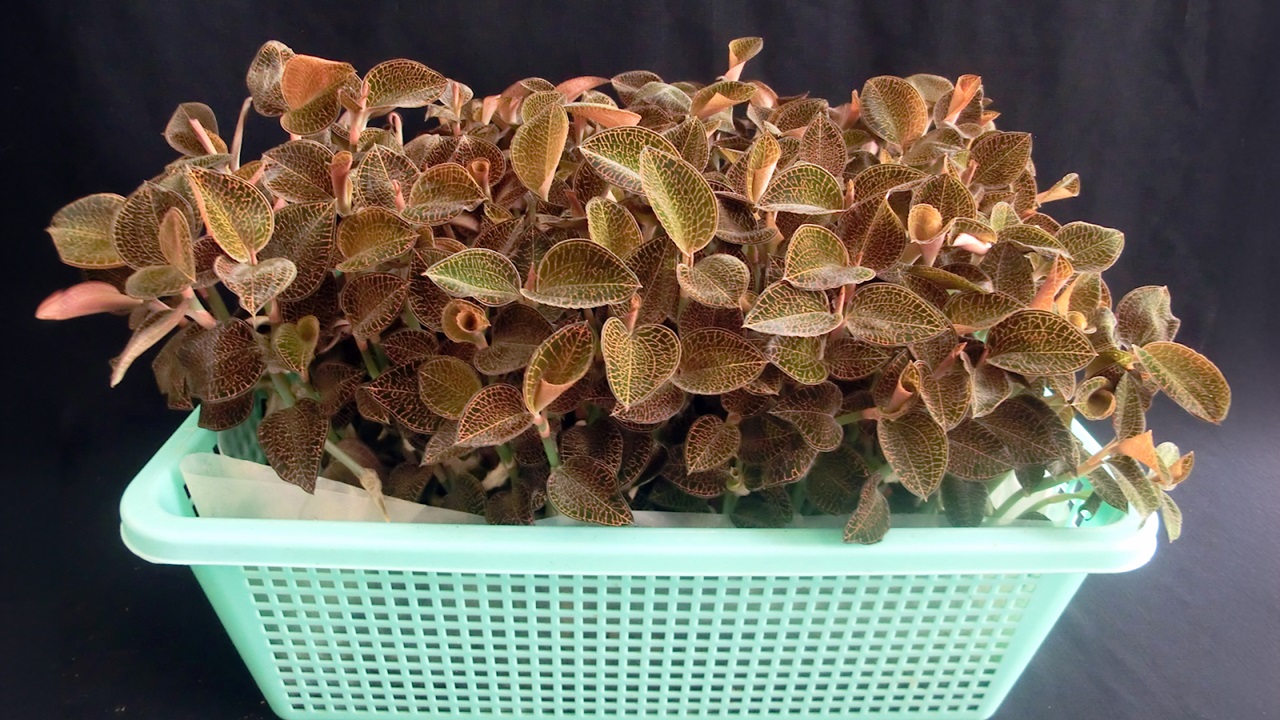
Tissue cultured orchid seedlings.
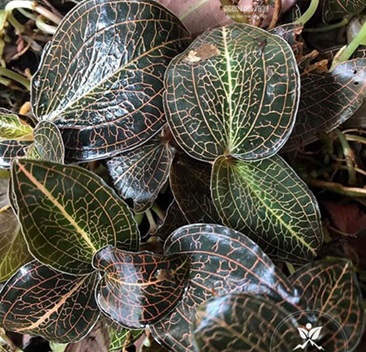
Close-up of spider web patterns on the leaves of a brocade orchid.
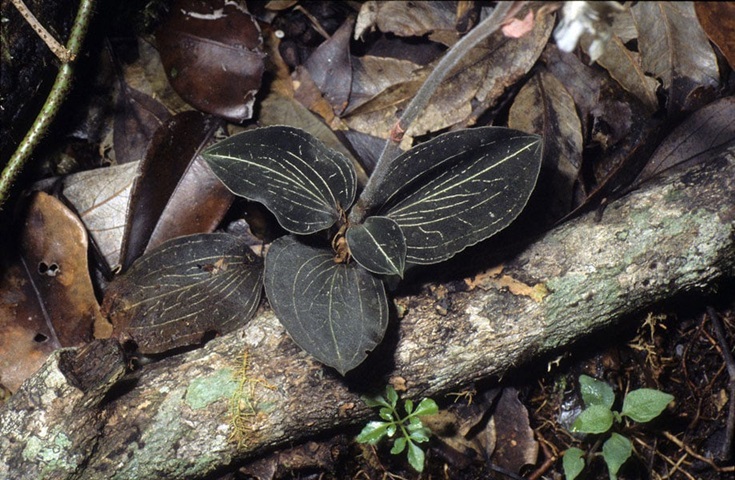
A orchid growing in the wild.
Thus, through the article that orchid-vn.com shares above, it can be seen that the orchid (golden orchid) is not only a beautiful ornamental plant but also a valuable medicinal herb in Oriental medicine. Although they are not widely grown and require growers to have many techniques, if you want to challenge yourself and have more interesting experiences, try the orchid right away.
Goodbye and see you soon in other articles of the Blog section to learn more about other beautiful and meaningful orchid species.
